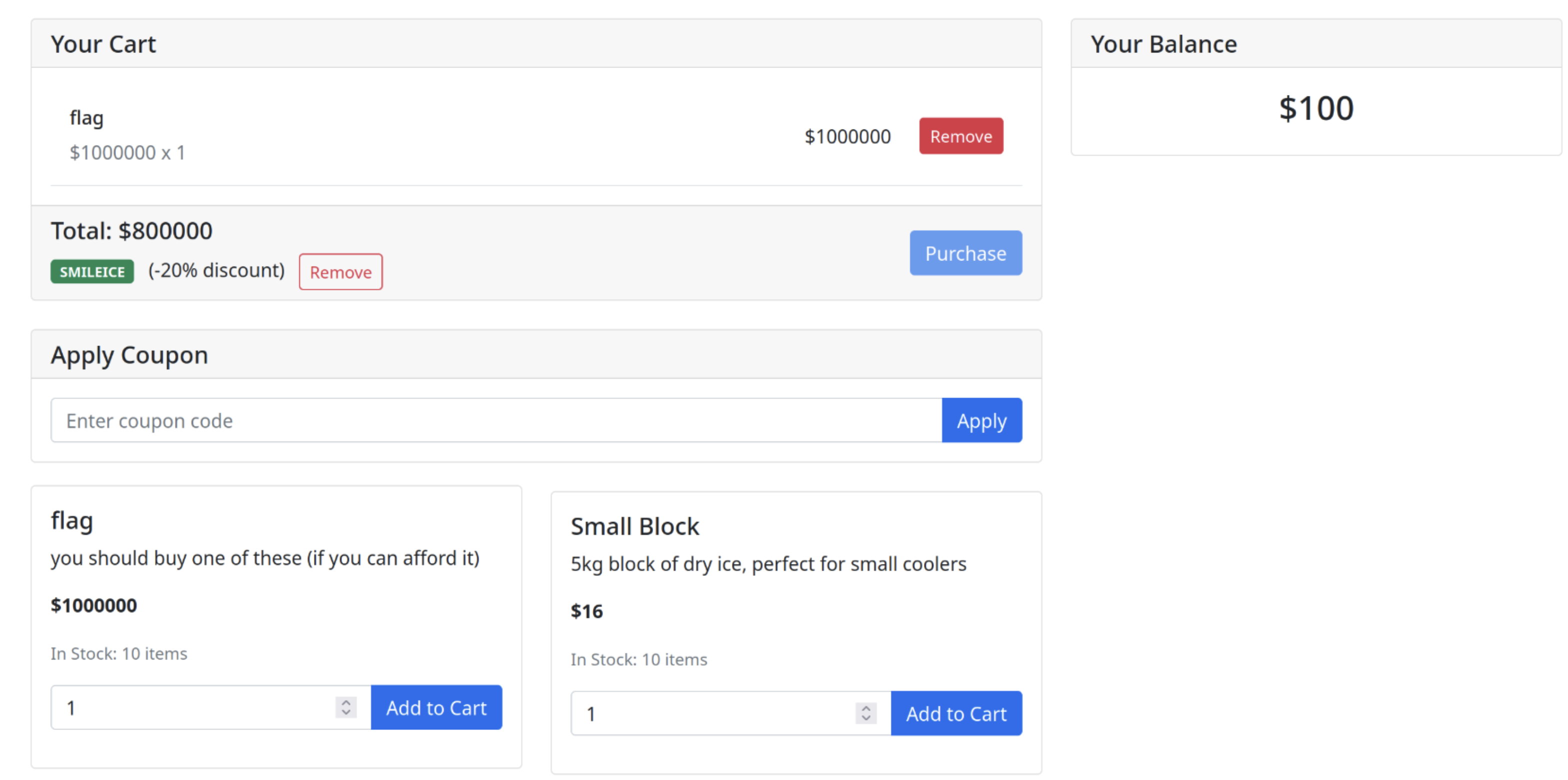
We are given a Java Spring Boot web application. The website sells dry ice - we can purchase a flag that costs $1,000,000 but we only start with $100. The first vulnerabilty is with the admin check:
if ((user.admin = true) && user != null && name != "flag") {
availableProducts.add(new DryIceProduct(name, price, description));
}
This uses assignement = instead of comparison == so user.admin is set to true for any user making a request.
Next, the shopping cart total calculatoin has an integer overflow
public int getTotal() {
int total = items.stream()
.mapToInt(CartItem::getTotal)
.sum();
total = Math.abs(total);
if (isCouponValid()) {
total = (int)(total * (100.0 - (double)DISCOUNT_PERCENTAGE) / 100.0);
}
return total;
}
Cart item getTotal:
public int getTotal() {
return Math.abs(price) * Math.abs(quantity);
}
Negative purchase addition:
public void purchase() {
if (canAfford()) {
balance -= getTotal();
// ...
}
}
As admin, we can create new items to be sold in the shop. If we create an item with the value -1073741824 then Math.abs(-1073741824) * 2 = 2,147,483,648 This is equal to 2^31 which overflows to -2,147,483,648 (Integer.MIN_VALUE)
Math.abs(Integer.MIN_VALUE) = -2,147,483,648 (remains negative)
So when we buy these items, our total balance is set to -2,147,483,648.
Now we can apply our coupon code SMILEICE for a 20% discount. The negative total becomes: -2,147,483,648 × 0.8 = -1,717,986,918 When we make a purchase with the negative total the balacne is calculated as 100 - (-1,717,986,918) = 1,717,987,018. And we have enough points to buy our flag
.;,;.{this_is_not_a_political_statement_btw}